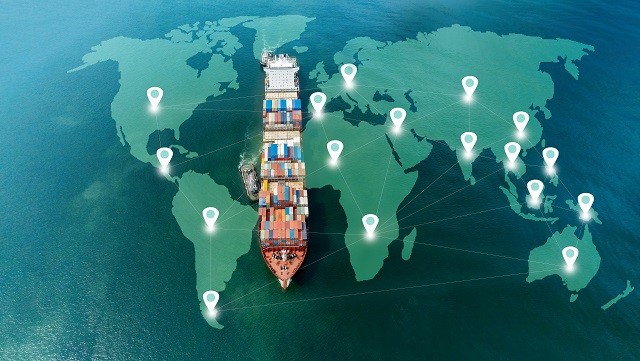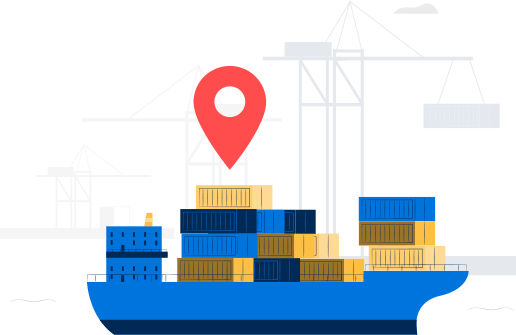
23 Jun
In today’s interconnected world, global trade plays a vital role in fostering economic growth and establishing international relationships. As businesses expand their reach beyond domestic borders, the need for effective global trade management becomes increasingly important. This article aims to provide a comprehensive overview of global trade management, highlighting its significance, key components, challenges, and benefits.
-
1.Introduction: The Importance of Global Trade Management
Global trade management refers to the processes, strategies, and technologies employed by businesses to effectively manage their international trade operations. It encompasses a wide range of activities, including compliance with trade regulations, supply chain visibility, documentation management, customs procedures, and leveraging trade agreements. With the increasing globalization of markets, organizations must navigate the complexities of international trade to capitalize on new opportunities and maintain a competitive edge.
-
2.Understanding Global Trade Management
Global trade management involves the coordination and optimization of various activities throughout the trade lifecycle. It begins with strategic planning, where businesses assess market potential, identify target regions, and evaluate regulatory requirements. Effective global trade management ensures compliance with trade regulations, streamlines supply chain operations, minimizes risks, and maximizes operational efficiency.
-
3.Key Components of Global Trade Management
3.1 Compliance and Risk Management
Compliance with international trade regulations is a critical aspect of global trade management. Organizations must stay updated on trade policies, tariffs, embargoes, and other legal requirements to avoid penalties and disruptions. Risk management involves assessing potential risks, such as geopolitical instability, supply chain vulnerabilities, and financial uncertainties, and implementing measures to mitigate them effectively.
3.2 Supply Chain Visibility
Maintaining visibility across the global supply chain is essential for efficient trade management. By leveraging advanced technologies like IoT, blockchain, and data analytics, businesses can gain real-time insights into inventory, logistics, and transportation. Supply chain visibility helps optimize inventory levels, reduce lead times, improve customer satisfaction, and identify bottlenecks or disruptions promptly.
3.3 Trade Finance and Documentation
Trade finance and documentation play a crucial role in facilitating international transactions. Efficient management of trade financing, including letters of credit, export financing, and insurance, ensures smooth payment transactions between buyers and sellers. Additionally, accurate and timely documentation, such as commercial invoices, bills of lading, and customs declarations, helps streamline customs procedures and prevents delays or penalties.
3.4 Customs and Border Control
Navigating customs procedures and border controls is a complex and time-consuming process in global trade. Effective global trade management involves understanding and complying with customs regulations, documentation requirements, and import/export procedures. Automation and electronic data interchange systems can expedite customs clearance, reducing administrative burdens and facilitating smoother cross-border movements.
3.5 Trade Agreements and Regulations
Trade agreements, such as free trade agreements (FTAs) and preferential trade agreements (PTAs), provide businesses with tariff concessions and preferential market access. Global trade management requires a thorough understanding of these agreements to identify opportunities for duty savings, preferential rules of origin, and market expansion. Complying with the regulations outlined in these agreements enables businesses to capitalize on the benefits they offer.
-
4.Challenges in Global Trade Management
While global trade management presents immense opportunities, it also comes with its fair share of challenges. Understanding and addressing these challenges is crucial for successful trade operations. Some of the key challenges include:
4.1 Complex Regulatory Environment
Navigating the complex web of trade regulations and compliance requirements across different countries poses a significant challenge. Businesses must invest in robust systems and processes to ensure adherence to ever-changing regulations, avoid penalties, and mitigate compliance risks.
4.2 Supply Chain Disruptions
Disruptions in the global supply chain can have severe consequences on trade operations. Natural disasters, political instability, trade disputes, and pandemics can disrupt transportation, impact sourcing strategies, and lead to delays or shortages. Global trade management requires proactive risk mitigation and contingency planning to minimize the impact of such disruptions.
4.3 Compliance and Security Risks
The global trade landscape is vulnerable to compliance and security risks, including smuggling, counterfeit goods, intellectual property violations, and terrorism financing. Businesses need to implement robust security measures, collaborate with regulatory authorities, and conduct thorough due diligence to ensure trade compliance and safeguard their operations.
4.4 Cultural and Language Barriers
Engaging in international trade often involves interacting with partners from diverse cultures and languages. Overcoming communication and cultural barriers requires effective cross-cultural communication skills, localization strategies, and understanding of international business etiquette.
4.5 Technology Integration
Leveraging technology is crucial for efficient global trade management. However, integrating various systems, such as trade management software, enterprise resource planning (ERP) systems, and supply chain platforms, can be complex. Businesses must invest in appropriate technology solutions and ensure seamless integration to optimize trade operations.
-
5.Benefits of Effective Global Trade Management
Implementing effective global trade management strategies offers several advantages to businesses:
5.1 Improved Operational Efficiency
Efficient trade management streamlines processes, reduces paperwork, and automates routine tasks. It improves supply chain visibility, enables faster order processing, and minimizes errors, leading to enhanced operational efficiency and cost savings.
5.2 Enhanced Risk Mitigation
By proactively identifying and mitigating risks, businesses can minimize disruptions, ensure compliance, and protect their reputation. Effective risk management practices foster resilience and enable businesses to respond swiftly to unforeseen events.
5.3 Cost Reduction and Profitability
Optimizing trade operations through effective management leads to cost reductions at various levels. It includes reducing customs duties, minimizing transportation and logistics costs, and improving inventory management. These cost savings contribute to improved profitability and competitiveness.
5.4 Competitive Advantage
Successful global trade management provides a competitive edge by enabling businesses to deliver products to international markets quickly, meet customer demands efficiently, and expand their reach. It allows companies to adapt to changing market dynamics and capitalize on emerging opportunities.
5.5 Expanded Market Opportunities
Global trade management opens doors to new markets, enabling businesses to tap into a broader customer base. By navigating trade barriers and leveraging preferential trade agreements, companies can access new markets and diversify their revenue streams.
-
6.The Future of Global Trade Management
The future of global trade management is closely intertwined with advancements in technology and evolving trade dynamics. Emerging technologies such as artificial intelligence, blockchain, and predictive analytics will further transform trade operations, enabling seamless integration, real-time insights, and enhanced risk management. Additionally, the increasing focus on sustainability, ethical sourcing, and supply chain transparency will shape the future of global trade management, fostering responsible and inclusive trade practices.
-
7.Conclusion
In an interconnected world, effective global trade management is crucial for businesses seeking growth and expansion opportunities beyond their borders. By understanding and implementing the key components of global trade management, organizations can streamline their trade operations, mitigate risks, and leverage the benefits of international commerce. Embracing technology, staying updated on regulatory changes, and investing in robust systems and processes will position businesses for success in the ever-evolving global trade landscape.
-
8.Frequently Asked Questions (FAQs)
Q1: How does global trade management help businesses?
Global trade management helps businesses streamline trade operations, ensure compliance with regulations, mitigate risks, and access new markets, leading to improved efficiency, profitability, and competitive advantage.
Q2: What are the major challenges in global trade management?
Major challenges in global trade management include complex regulatory environments, supply chain disruptions, compliance and security risks, cultural and language barriers, and technology integration.
Q3: How can businesses mitigate supply chain disruptions in global trade?
Businesses can mitigate supply chain disruptions in global trade by implementing proactive risk management strategies, diversifying sourcing strategies, maintaining supplier relationships, and establishing contingency plans.
Q4: What role does technology play in global trade management?
Technology plays a critical role in global trade management, enabling automation, supply chain visibility, data analytics, and seamless integration of trade processes. It improves efficiency, reduces errors, and enhances decision-making.
Q5: How does global trade management contribute to business growth?
Global trade management opens new market opportunities, enhances operational efficiency, reduces costs, and provides a competitive advantage. It allows businesses to expand their customer base, diversify revenue streams, and adapt to changing market dynamics.


